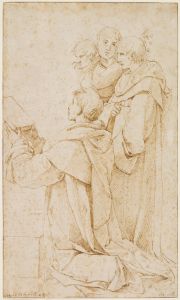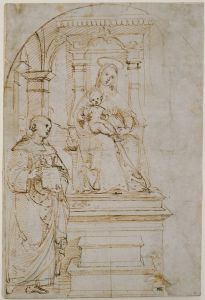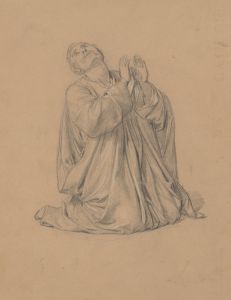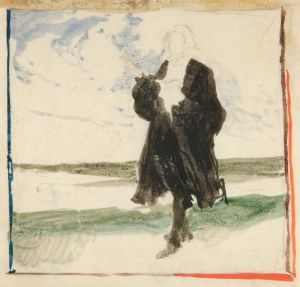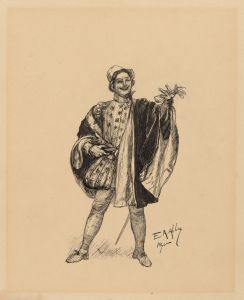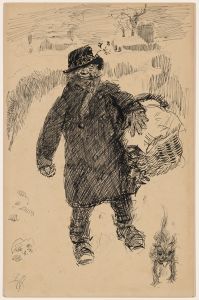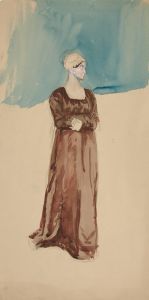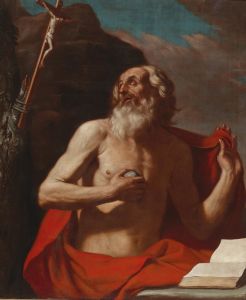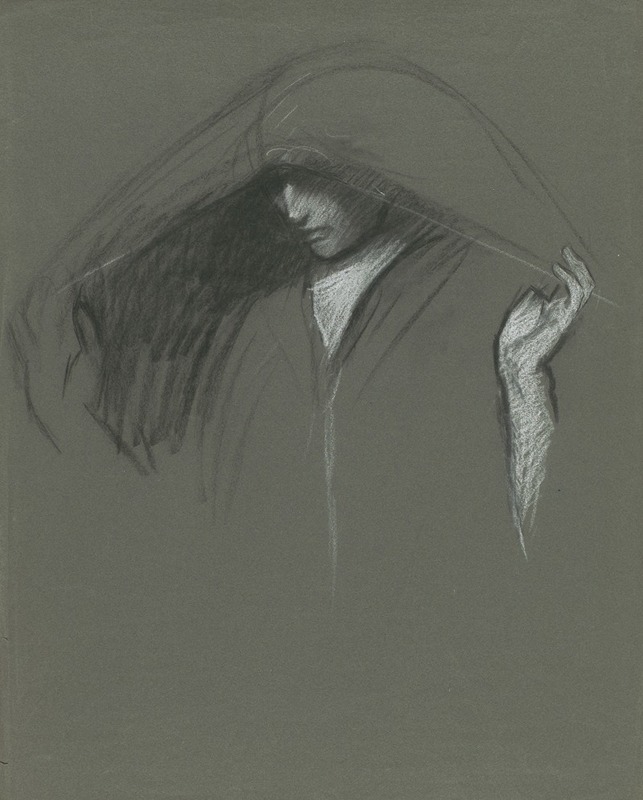
Study of draped head of ‘A Mary for Three Marys at The Tomb’
A hand-painted replica of Edwin Austin Abbey’s masterpiece Study of draped head of ‘A Mary for Three Marys at The Tomb’, meticulously crafted by professional artists to capture the true essence of the original. Each piece is created with museum-quality canvas and rare mineral pigments, carefully painted by experienced artists with delicate brushstrokes and rich, layered colors to perfectly recreate the texture of the original artwork. Unlike machine-printed reproductions, this hand-painted version brings the painting to life, infused with the artist’s emotions and skill in every stroke. Whether for personal collection or home decoration, it instantly elevates the artistic atmosphere of any space.
Edwin Austin Abbey's Study of Draped Head of ‘A Mary for Three Marys at The Tomb’ is a preparatory drawing created by the American artist as part of his work on the larger painting The Three Marys at the Tomb. Abbey, known for his detailed and historically inspired works, was a prominent illustrator and painter of the late 19th and early 20th centuries. This particular study demonstrates his meticulous approach to composition and his focus on capturing the emotional depth of his subjects.
The study is a detailed rendering of a draped female head, believed to represent one of the three Marys depicted in the final painting. The "Three Marys" refer to the biblical figures Mary Magdalene, Mary of Clopas, and Mary Salome, who are traditionally described as visiting the tomb of Jesus after his crucifixion. Abbey’s study focuses on the drapery and the serene, contemplative expression of the figure, emphasizing the solemnity and spiritual significance of the scene.
Abbey was deeply influenced by the Pre-Raphaelite movement and the works of European Old Masters, which is evident in the attention to detail and the naturalistic rendering of the fabric and facial features in this study. The drawing likely served as a preparatory work to refine the pose, expression, and arrangement of the drapery before incorporating the figure into the final composition. Such studies were a common practice for Abbey, who often created numerous sketches and studies to perfect his larger works.
The medium of the study is believed to be graphite or charcoal on paper, though specific details about the materials used may vary depending on the source. The drawing showcases Abbey's skill in shading and his ability to convey texture and depth, particularly in the folds of the drapery and the soft contours of the figure's face.
While The Three Marys at the Tomb is one of Abbey's notable religious works, the study itself is often appreciated as a standalone piece for its artistic merit and the insight it provides into Abbey's creative process. It reflects his dedication to historical and biblical accuracy, as well as his commitment to achieving a high level of craftsmanship in his art.
The exact location of the study, whether in a private collection or a museum, is not widely documented. However, it remains an important example of Abbey's preparatory work and his broader contributions to religious and historical art.





